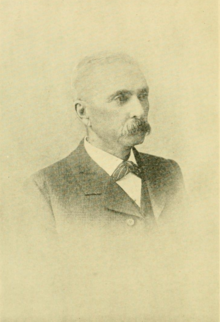Thomas Broun | |
|---|---|
 | |
| Born | Thomas Brown 15 July 1838 Edinburgh, Scotland |
| Died | 24 August 1919 (aged 81) Auckland, New Zealand |
| Resting place | Waikumete Cemetery, Auckland |
| Military career | |
| Allegiance |
|
| Years of service |
|
| Rank |
|
| Unit |
|
| Wars | |
| Awards | |
Thomas Broun (né Brown; 15 July 1838 – 24 August 1919) was a Scottish-born soldier, farmer, teacher and entomologist, who spent much of his career in New Zealand. He is known for his study of the beetles (Coleoptera) of New Zealand.
Broun was born in an upper-class Edinburgh family, and appears to have received his education entirely from a private tutor. He served from around the age of sixteen as an officer in the British militia and army, first in the Forfar Militia Artillery and, from 1856, in the 35th (Sussex) Regiment of Foot. He fought in the Crimean War and was subsequently posted to Burma, where he began his interest in entomology. He saw further combat in the Indian Rebellion of 1857, but was invalided out of the army in 1862, at the age of twenty-four, after a near-fatal bout of cholera. He emigrated to New Zealand in 1863, where he gained a commission in the Waikato Militia and commanded troops during the Second Taranaki War.
Upon leaving military service in 1866, Broun attempted to establish himself as a farmer, though legal troubles forced him into bankruptcy the following year. He presented his first entomological paper in 1875, became a teacher in 1876 and worked in various schools around Auckland until 1888. His most significant scientific work, the Manual of the New Zealand Coleoptera, was published in seven volumes from 1880, though he remained an amateur until the 1890s, when he was appointed as a government entomologist and as an inspector of imported fruits. He died on 24 August 1919 in Auckland.
Broun has been credited among the most prolific identifiers of New Zealand's beetles, and as one of the most important figures in their study. Over the course of his career, he made identifications of 4,323 species, of which 3,538 were previously unknown to science. However, his documentation of his work was poor, and many of the species he identified were in fact synonyms of each other, leading to what has been termed the "Broun effect", by which estimates of the number of beetle species in New Zealand have been substantially overestimated.